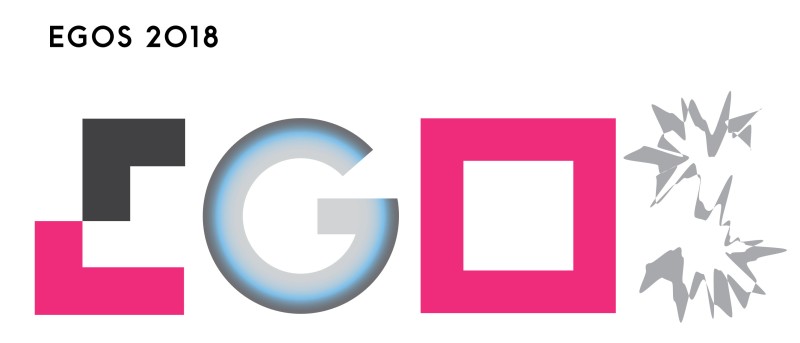Sub-theme 58: Calling the Weberian Pokerface: On the Affordances of Play in Organizations ---> Merged with sub-theme 31
Call for Papers
The perfect organization is cradled in Weberian ideals of rationality and efficiency. But it is a bleak, featureless, faceless
site of work. However, hidden behind this pokerface of rationality and efficiency is an organizational reality both pulsing
and playful. Organizations are full of mischievous chances, of vain displays of prowess, of performative spectacles, of frenzied
bodily initiations (Caillois & Barash, 1961). The everyday life of organizations is filled with schemes, plays, games
and stratagems. These result in organizations frequented by surprise, serendipity and shock. Play is amongst mankind’s oldest
forms of organizing (Huizinga, 1955; Vesa et al., 2016). But to understand how play, games and organization interact we should
examine more in detail what sorts of playful or gamelike affordances we can find in different organizational contexts. It
is time to call organization’s Weberian pokerface.
Affordances are possibilities for (inter) action present
in items, concepts and situations. As Gibson (1977; 1979), who originally coined the concept, notes, most of them tend to
be visually noticeable to us humans. Many other affordances, however, are hidden, or they can only emerge in certain contexts.
In design, primary affordances are intentionally made visible, and design theory’s interpretation of the concept (Norman,
1988) usually counts as affordances only the properties that can be perceived. For example, a spoon presents its ability to
convey liquids quite easily, and a good spoon enables that conveyance both efficiently and pleasantly. In this sense, games
and playful artifacts are items that have been intentionally designed and constructed to afford play. They contain elements
meant to motivate and afford enjoyment; and can also facilitate this as parts of other systems, processes and activities (Deterding,
2015). Gamification, in turn, takes some such affordances and imposes them upon tasks that would not normally be considered
playful (Deterding, 2016). A meeting established for corporate strategizing can thus be seen as a situation that presents
affordances for hypothesis forming, speculation and the presentation of temporal propositions as possible playful futures.
This, in turn, creates affordances for future actions. It is gamified, in the sense that the participants often skilfully
search for competitive advantage, and aim to emerge victorious in competition.
Our take on the affordances
of play here is an expansive one; it can include concepts from games, from sports, from simulation, from ritual, from child’s
play or from risk. Submissions to the sub-theme can focus on, but are not limited to, topics such as:
Playful practices in organizing. What is it that people do when they play and game within organizational settings?
Playing and playful organizations. From high-risk enterprise to highly creative industries, what forms of organizing stem from playful foundations in today’s society?
The role of play within and outside institutions. How do play and games interact with wider institutional frameworks? Can play occur within institutions, and does play itself carry some specific institutionalizing potential?
Play and business ethics. If play is a different register of activity than rational work, what are then the ethical implications of play in organizations? Can play be a source of corporate misconduct?
Playful bodies in management. How does the current managerial interest in hyper sports such as triathlon relate to how organizational members present themselves at work?
Play as a form of organizational learning. From experimentation to simulation, serious games to role-playing. How does play function as a type of organizational learning?
Playing for the future. What is the relationship between play and organizational temporality; in particular how does strategy work use playful affordances to construe alternative futures?
Misappropriations of play in organizations. In what ways can play can go wrong in organizations, and what are the consequences of this?
Play-based discourse as a venue for power and hegemony. Do games and play give rise to specific ways in which power and hegemony is played out in organizations? Can play act as a form of resistance?
References
- Caillois, R., & Barash, M. (1961): Man, Play, and Games. Chicago: University of Illinois Press.
- Deterding, S. (2015): “The lens of intrinsic skill atoms: A method for gameful design.” Human-Computer Interaction, 30 (3–4), 294–335.
- Deterding, S. (2016): “Make-believe in gameful and playful design.” In: P. Turner & J.T. Harviainen (eds.): Digital Make-Believe. New York: Springer, 101–124.
- Gibson, J.J. (1977): “The theory of affordances.” In: R. Shaw & J. Bransford (eds.): Perceiving, Acting, and Knowing. Hilldale, NJ: Lawrence Erlbaum, 67–82.
- Gibson, J.J. (1979): The Ecological Approach to Visual Perception. Boston: Houghton Mifflin.
- Huizinga, J. (1955): Homo Ludens: A Study of the Play-Element in Cult. Boston: Beacon Press.
- Norman, D.A. (1988): The Psychology of Everyday Things. New York: Basic Books.
- Vesa, M., Hamari, J., Harviainen, J.T., & Warmelink, H. (2016): “Computer Games and Organization Studies.” Organization Studies, 38 (2), 273–284.


